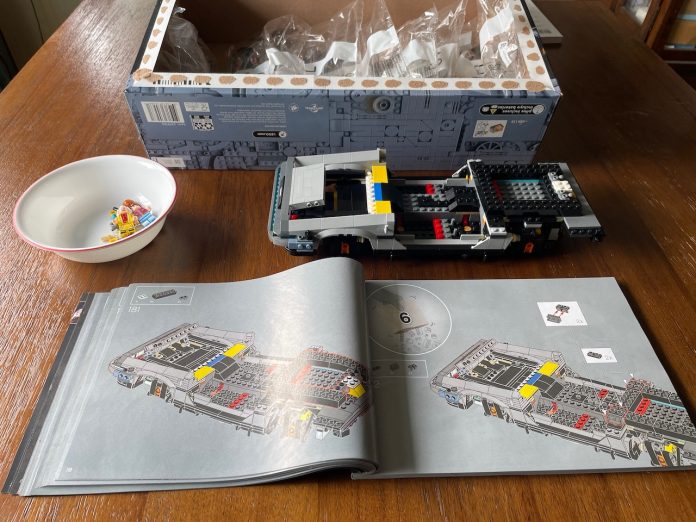Now that we here in the northern hemisphere have celebrated summer solstice, we must get Official Summer underway.
That means we have to do all the outside things that we couldn’t do during the gloomy Seattle Long Dark, making hay while the sun shines. The list is long. We must plan hikes and cookouts and gardening and bug finding and horseback rides and paddle boarding and bike treks and beach time. We have to get to parks and museums and amusement parks and family cabins and summer camps. We must makes sure to see the Solstice Parade, the Pride Parade, the Storm and the Reign, the Sounders and the Mariners, and then out for berry picking at the farm. It’s good the sun is up for 16 hours, we’re going to need all of it.
Unfortunately, one thing that’s not on the list is to calm down. Folks get a little too wound up about the sunlight, so maybe we should add something else to the list. Get yourself a nice Lego set and enjoy putting it together.
I have a couple larger sets lined up for the next few weeks. I’ve been accumulating them, waiting for the right spot to crack one open. They’re like books, where if you maintain the right shape and size pile for long enough, there will be one ready for the moment you need it.
The Lego model I have underway right now is a 1981 DeLorean DMC-12 uniquely modified with a flux capacitor and 1.21 gigawatt Mr. Fusion reactor. I just finished Bag #5, where we assembled the front wheel wells and slapped the DMC logo over the silver bumper. It cased in the mechanism that flips the wheels for hover mode.
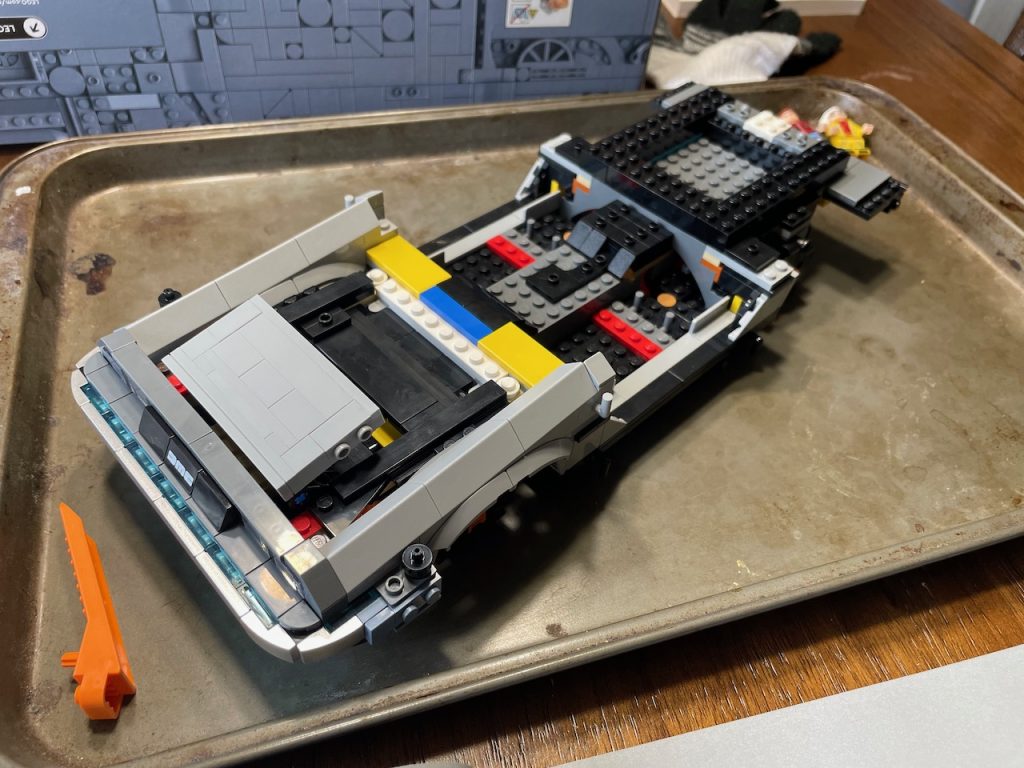
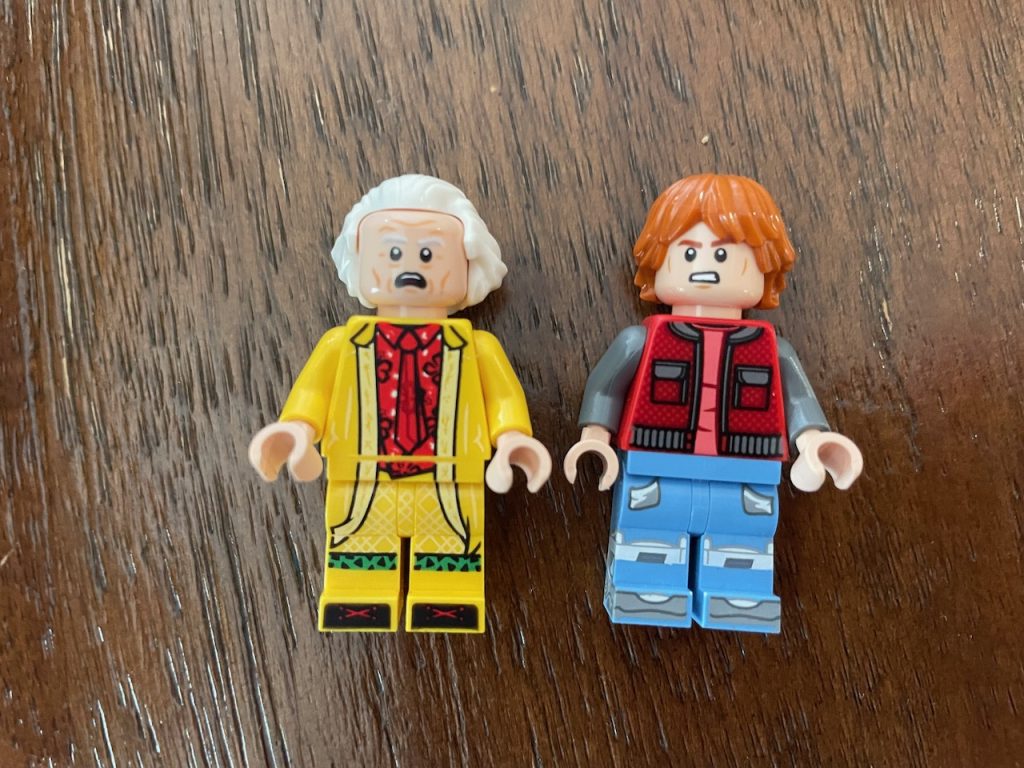
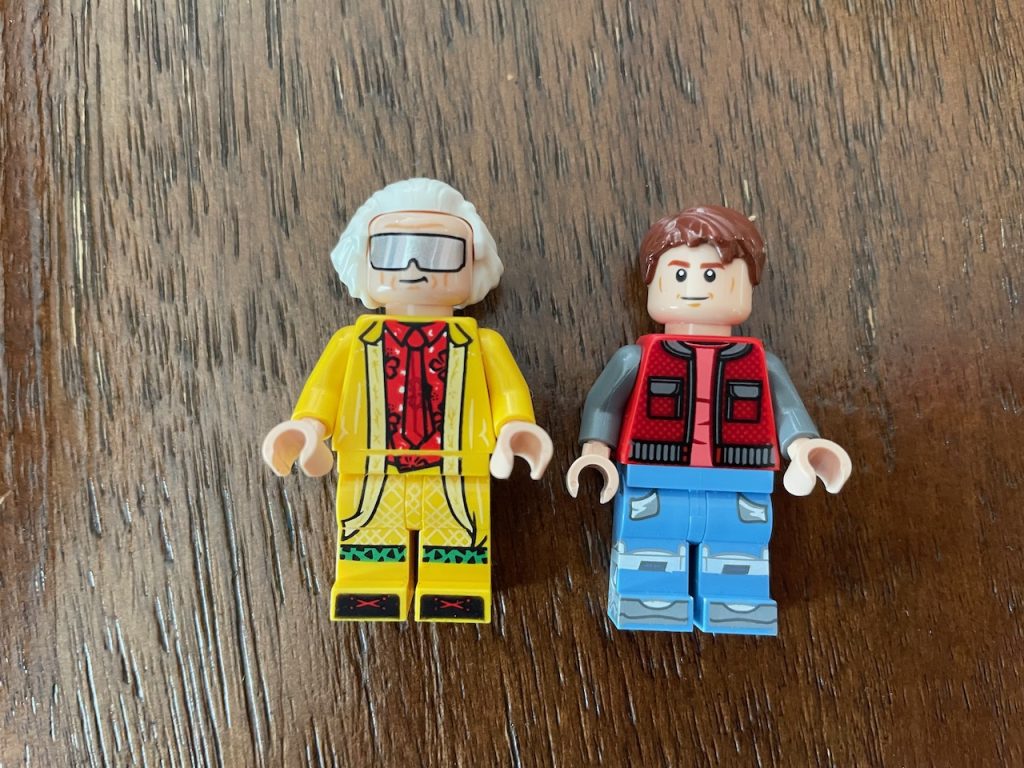
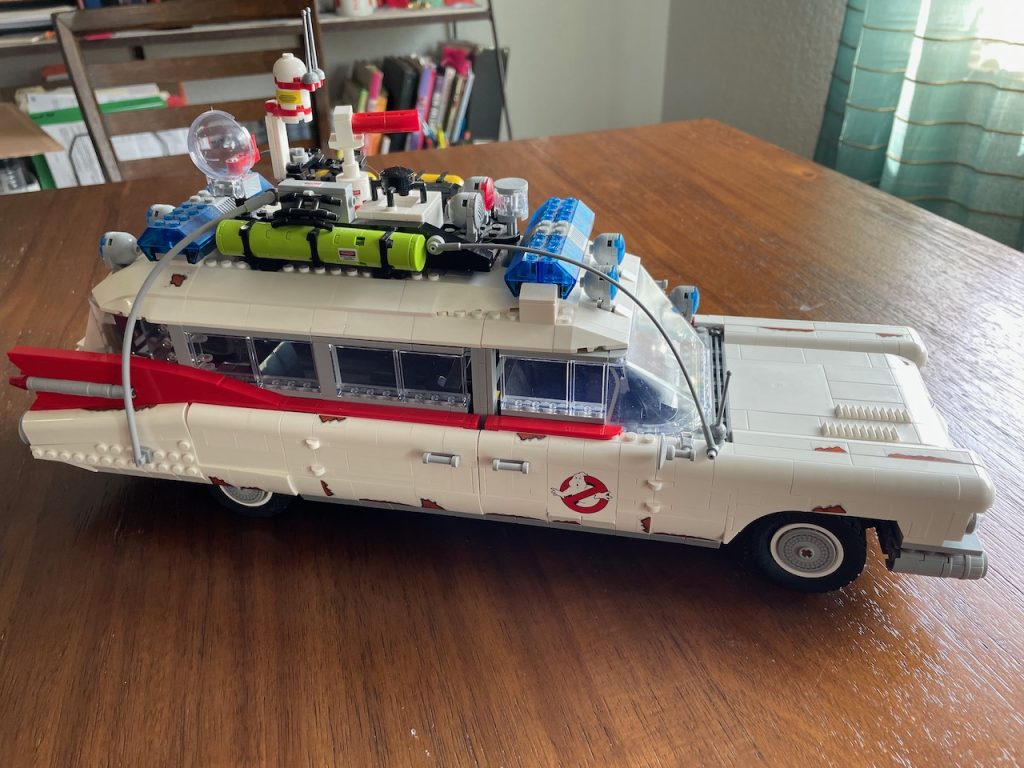
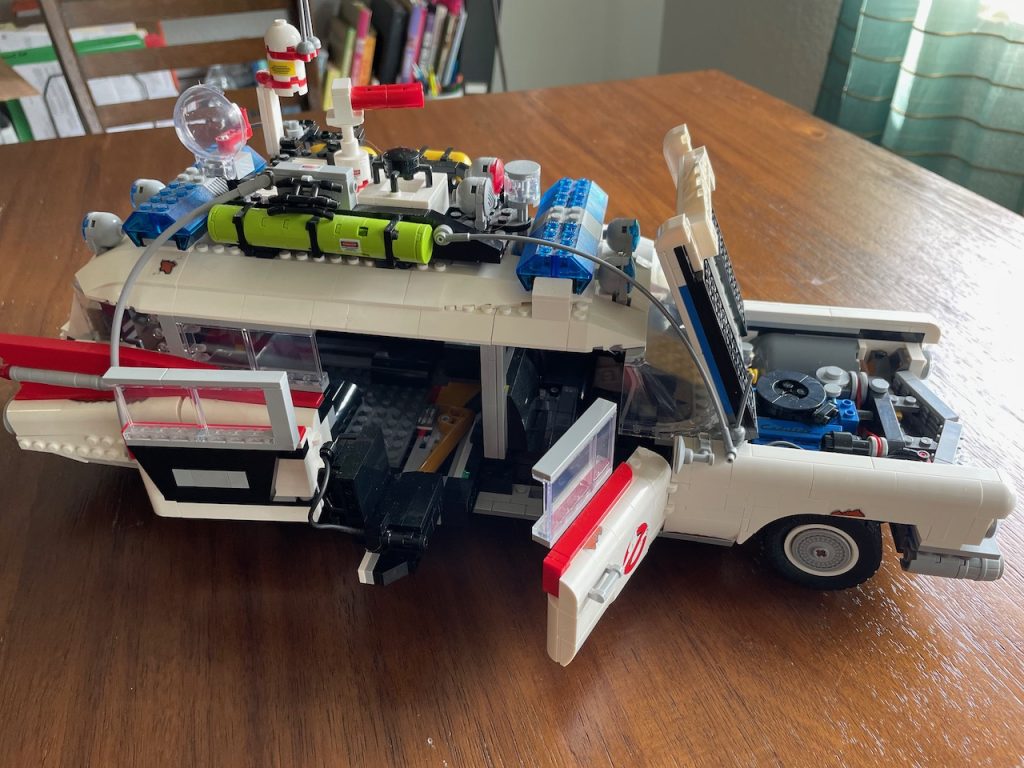
When it’s done, it will go on the shelf to join a 1959 Cadillac Miller-Meteor Sentinel that was uniquely modified with backpack proton accelerators and ecto-containment facilities. Some day, I hope to complete this set of Lego car models with a 1974 Dodge Monaco uniquely modified with the Mount Prospect Police logo, no cigarette lighter, and a very large megaphone on the roof. Alas, that set does not yet exist. HINT HINT, LEGO.
Modern Legos are a delight to build. Instead of row after row of individual gray blocks layering up to a castle, the sets are colorful, dynamic, three dimensional constructions. The Lego Grogu is essentially a statue of the Star Wars character, but building it is a lesson in squaring the circle. It starts with a rectangular frame then each side of The Child’s robe is separately built and attached vertically. The panels look like landscapes, building up angles and blocks to this organic fabric shape. There is a deep satisfaction in seeing this sculpture evolve.
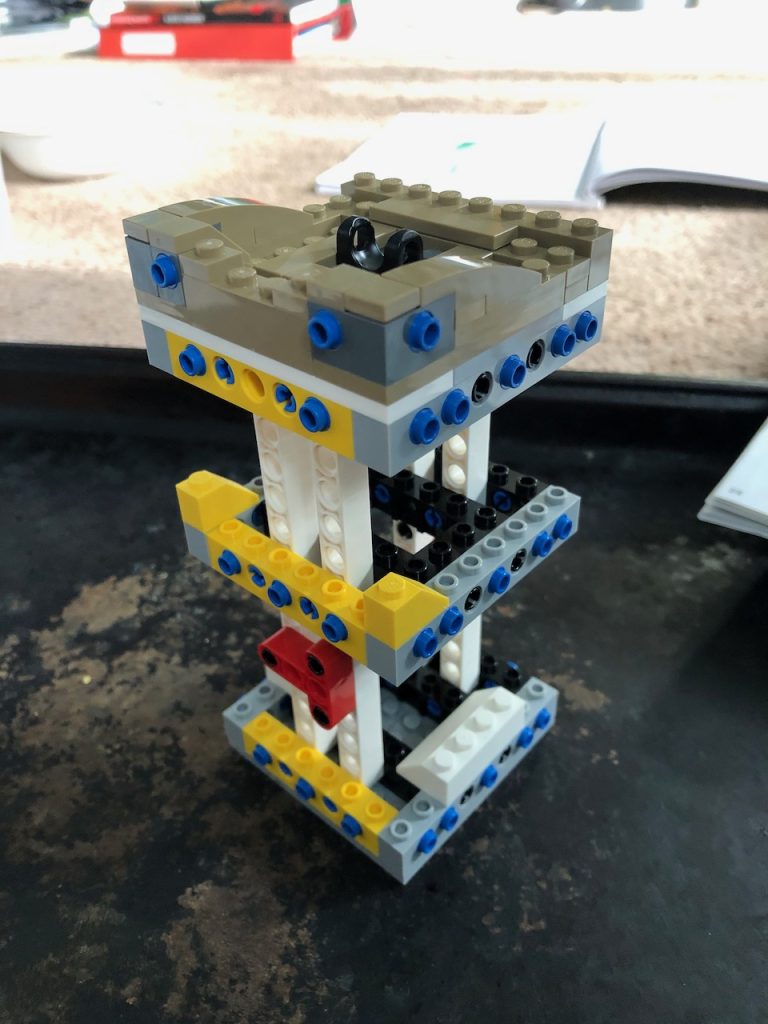
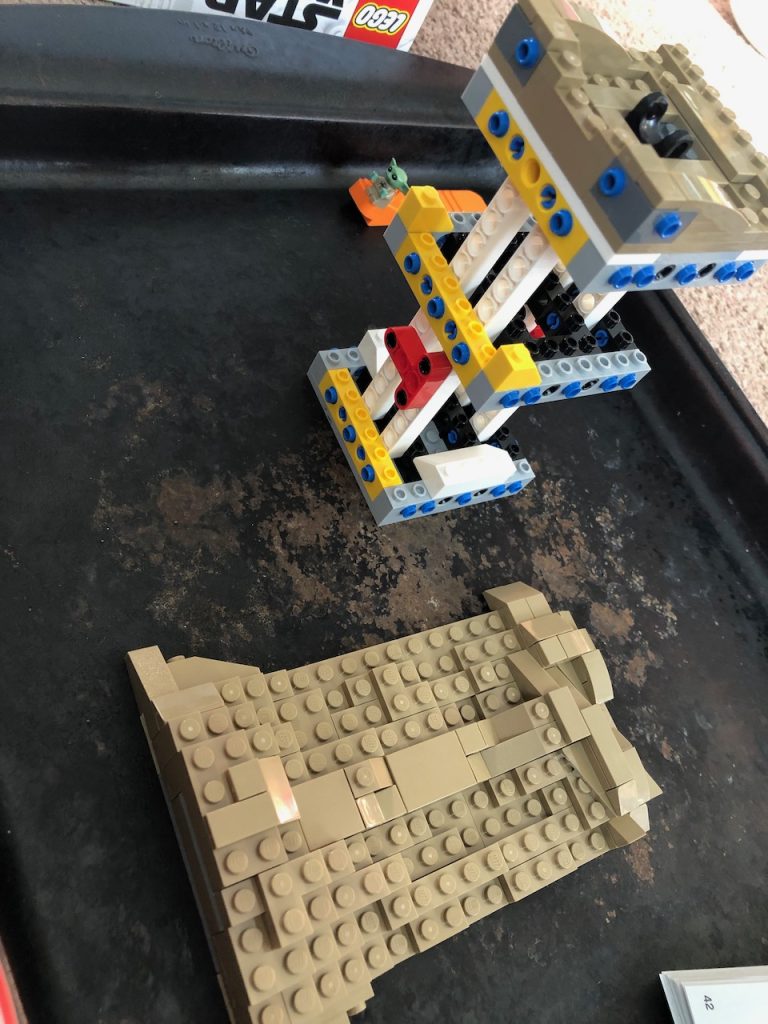
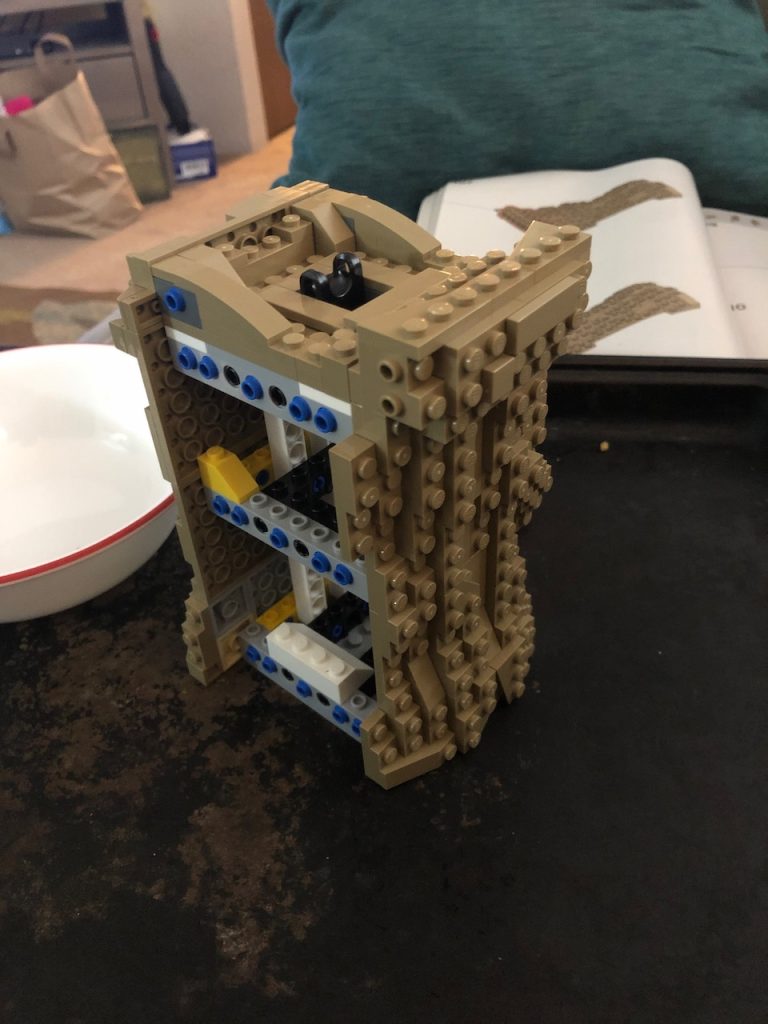
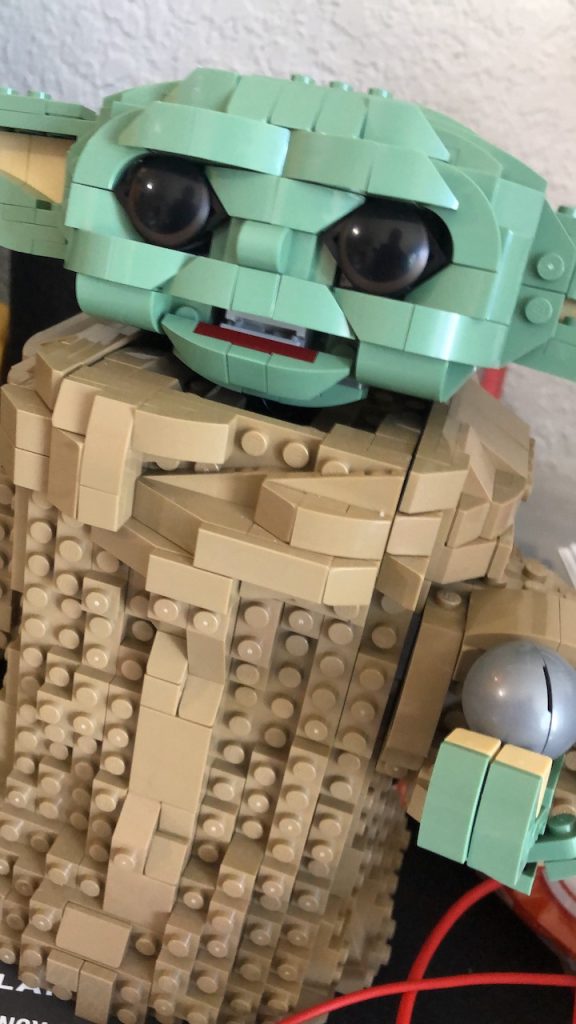
But how objectionable to suggest doing Legos in the summer! Like, go outside now and save this indoor stuff for the part of the year it’s dark.
I see your point, but allow me to retort. First, summer can be unpleasant. It’s hot and, in a city full of beer and seafood, full of smells. For a lot of the country, increasingly so in Seattle, summer heat triggers an unstable and unpredictable atmosphere with fast rising storms. And as much as I like people, folks get a bit addled when they’ve been in the sun too long. It’s nice to find the occasional refuge inside.
We did the Lego World Map a few years back while sheltering from the heat dome in our one air conditioned room. While it went over 100 degrees in wildly unprepared Seattle, we turned on a movie and put 11,000 little dots on a 20 inch by 40 inch mosaic. The instructions included panel-by-panel instructions for making a colorful relief map of the sea floor. We opted for a more free-form look at the oceans, full of monsters and patterns. To date, it is the largest Lego set available, and a perfectly reasonable antidote to catastrophic climate events.
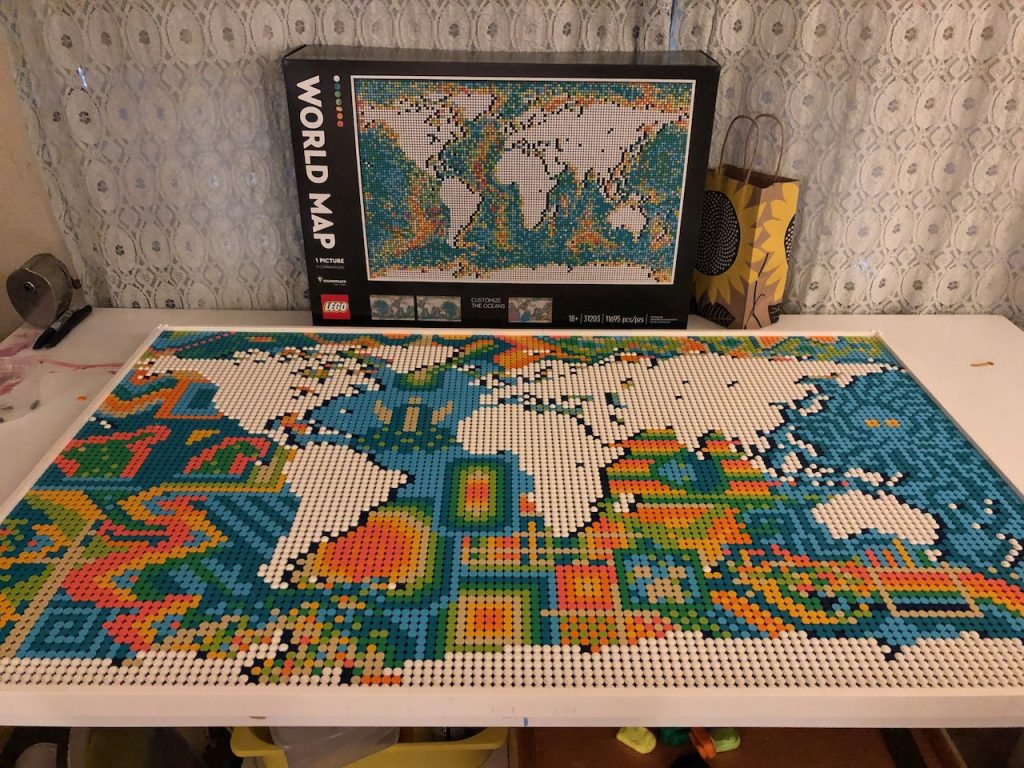
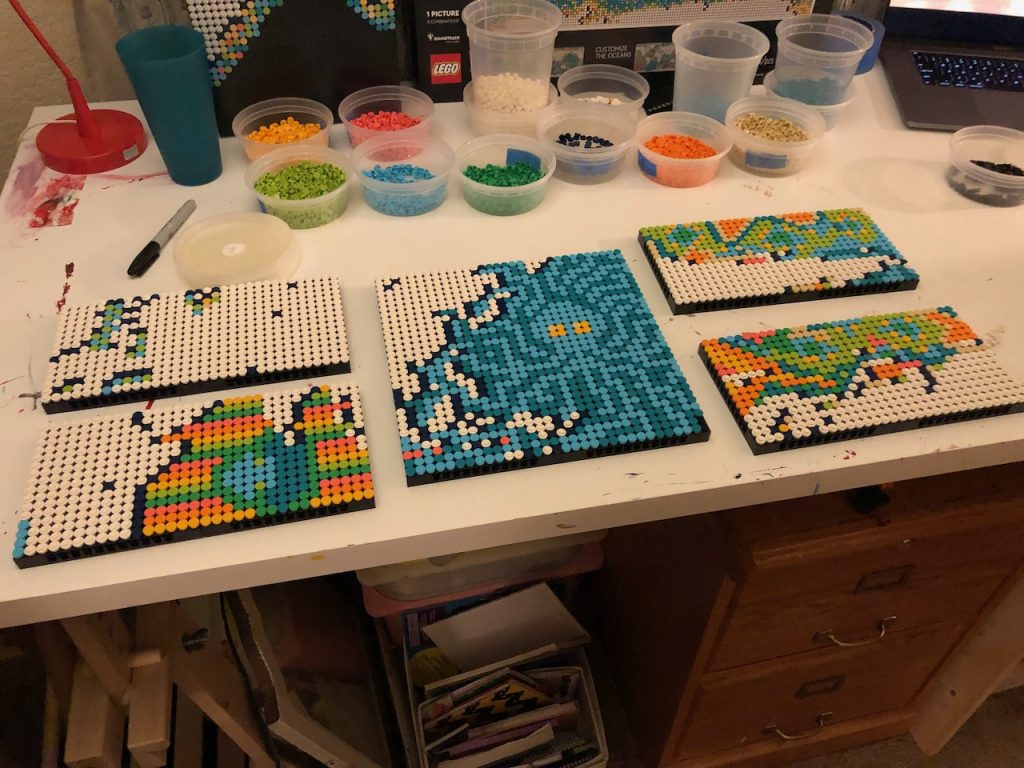
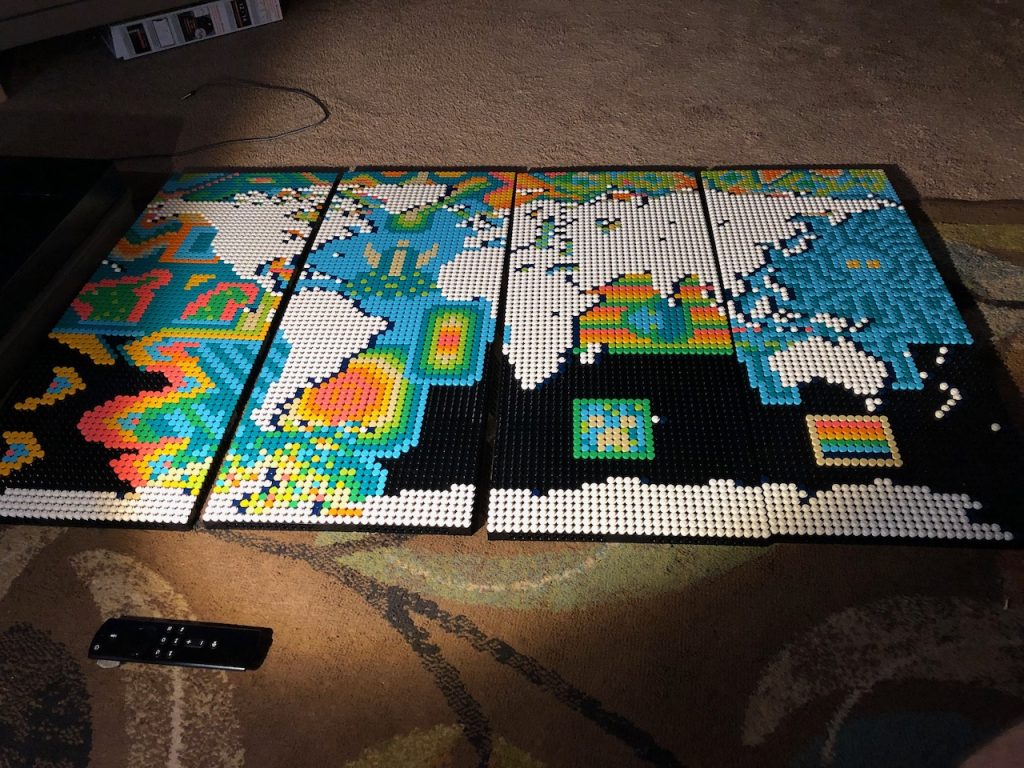
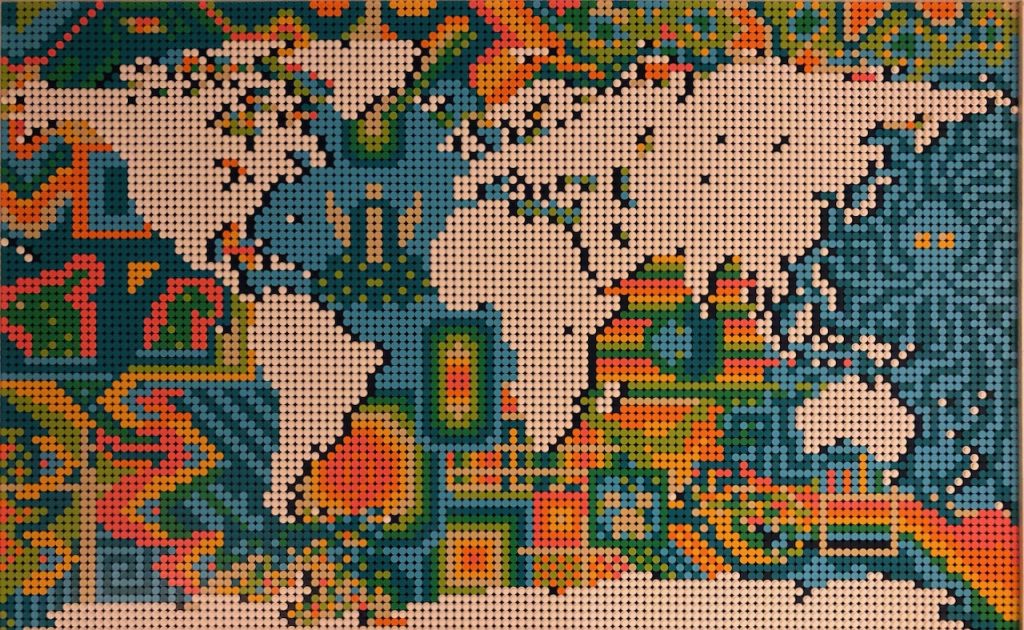
Second, the winter months might be dark, but they are not docile. From September to Halloween is the school launch. Then it’s the holidays, which stretch well into the new year. February, though short and occasionally cold, has become the crucible of gluttony as everyone rebounds from Dry January with Superb Owl parties and Valentine’s Day. March and April are the doldrums, but they’re less about repose and more about routine. Work, school, practices, shuttling to events, rinse, repeat. May and June are the gauntlet of end-of-year events, playoffs, and recitals. Blammo, summer, and all the expectations thereof.
I think the feeling of winter-summer work imbalance is the product of a Little House on the Prairie mindset. We believe we’re supposed to have these long summer school breaks to allow the children to toil on the family farm, then everyone is supposed to hibernate inside for the winter to darn socks and get their studies in.
But if you actually read the books, there was a lot more work (and casual racism) happening in the winter, particularly the long one when they risked starvation. They also had a lot more leisure all the time. Most pre-industrial societies spent a good amount of time not working because work is hard, it takes up the energy you’re trying to store by accumulating food, and there’s better stuff to do. Frankly, everyone in the world spends a lot less time working than Americans.
Americans’ fixation on toil and productivity over-pressurizes our meager downtime. Since we get so little time off, we feel obligated to pack into summer all the adventure, rest, fun, and family time we don’t get the rest of the year. A while back, Idaho had an ad campaign called 18 Summers reminding parents of the limits of their time with the kids. It’s brutal and true.
More than anything else, Lego is a remedy to this kind of obligation. I do the car models by the instructions because I love the movies they’re from and really enjoy seeing the sets come together. We didn’t do the world map by the book because we didn’t want to. We have castles, treehouses, and dragons that get assembled, deconstructed, stacked, rebuilt, and demolished. Then we have little garden plot sets that have been together for a decade because it’s fun to move the bunnies and carrots around.
That’s why we do Lego sets in the summer. There’s no should in Lego, there’s just chances to try. It’s an idea that fits well with the sunny season. Why that doesn’t work the whole year is somewhat confounding. Maybe that’s part of Bag #6.
Ray Dubicki is a stay-at-home dad and parent-on-call for taking care of general school and neighborhood tasks around Ballard. This lets him see how urbanism works (or doesn’t) during the hours most people are locked in their office. He is an attorney and urbanist by training, with soup-to-nuts planning experience from code enforcement to university development to writing zoning ordinances. He enjoys using PowerPoint, but only because it’s no longer a weekly obligation.

